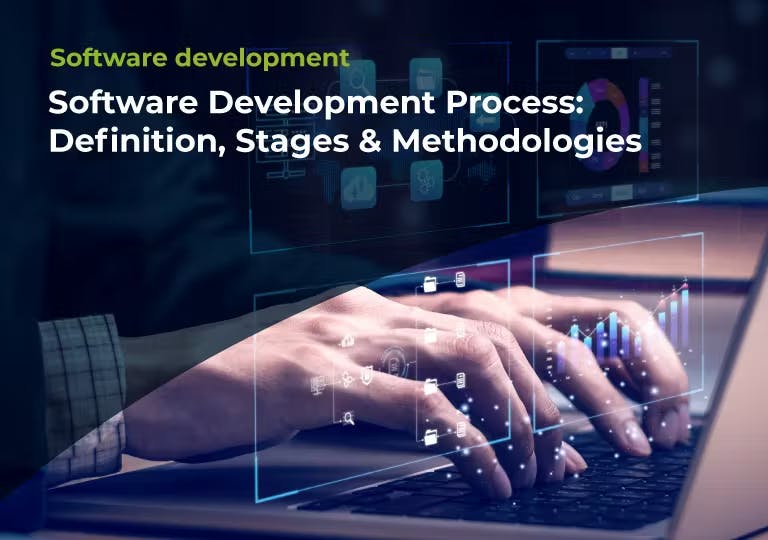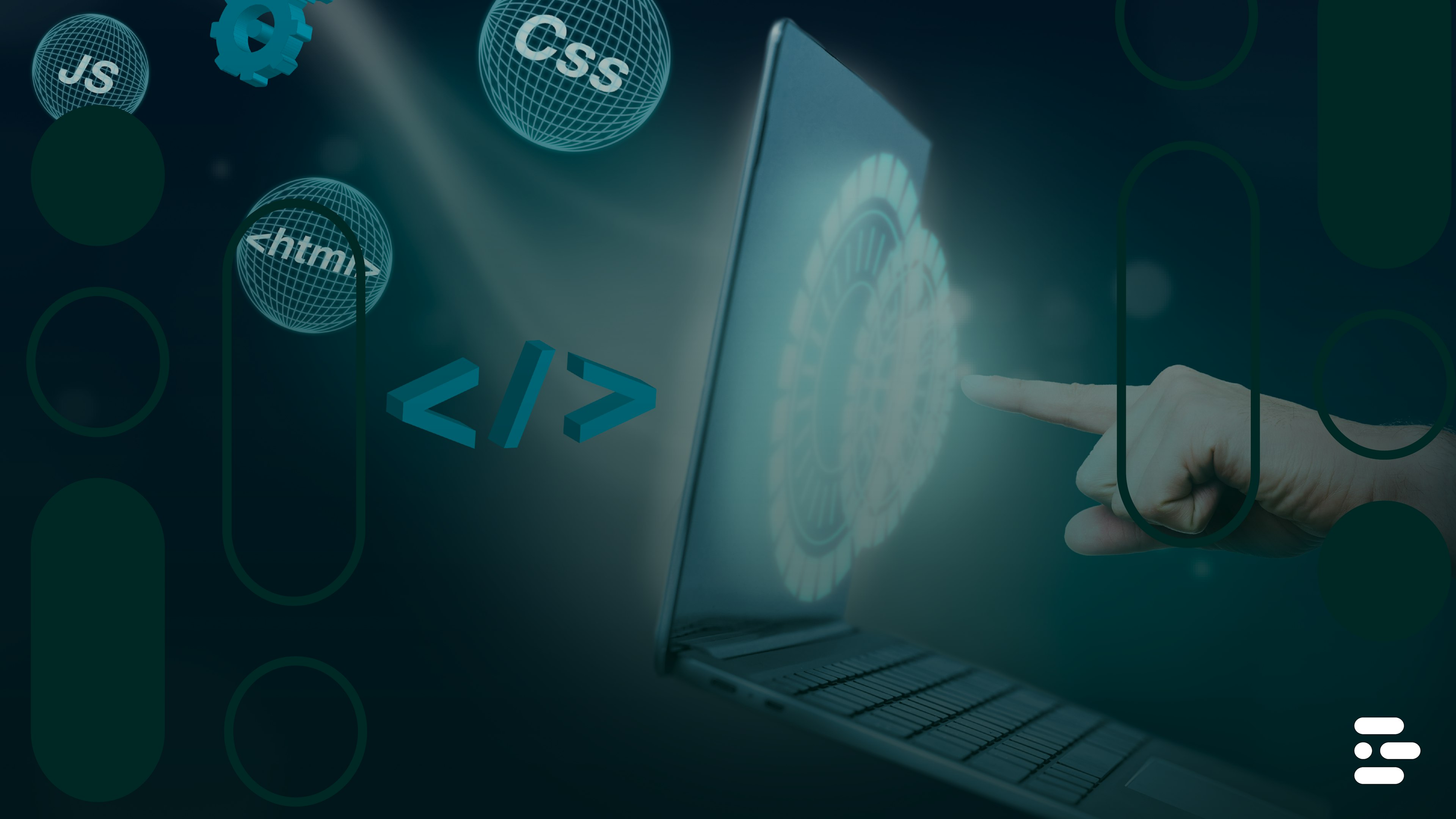Software Development Process: Definition, Stages & Methodologies


Introduction
Every successful digital product starts with one thing: a clear process.
Behind every app, platform, or enterprise system, there’s a structured series of steps that guide development from idea to launch. This is known as the custom software development lifecycle (SDLC), a proven framework that turns complex business goals into scalable, high-performing software.
At Devsu, we’ve refined this process across hundreds of successful projects, helping companies in fintech, healthcare, retail, and beyond accelerate time to market through agile, data-driven, and AI-enhanced development practices.
In this article, we’ll break down what the software development lifecycle looks like today—its stages, methodologies, and best practices, and how businesses can leverage it to build smarter, faster, and more secure applications.
What Is the Custom Software Development Lifecycle?
The custom software development lifecycle (SDLC) is a systematic framework used by engineering teams to design, build, test, and maintain software that meets specific organizational goals.
Unlike off-the-shelf software, custom solutions are designed around a company’s unique workflows, technology stack, and scalability needs. The SDLC ensures this process is consistent, predictable, and quality-focused, whether the product is a SaaS platform, mobile app, or enterprise integration system.
Modern SDLCs combine traditional engineering principles with Agile, DevOps, and automation to create continuous improvement loops and shorten delivery cycles.
Why the SDLC Matters in 2025
The global demand for digital transformation has pushed development teams to deliver faster without compromising quality.
According to Gartner’s 2025 Software Engineering Report, organizations using structured SDLC methodologies achieve 35% faster deployment and 40% fewer post-launch defects compared to teams without defined processes.
A strong SDLC helps businesses:
- Improve software reliability and maintainability.
- Detect and fix bugs earlier in the cycle.
- Strengthen application security from day one.
- Enable better collaboration across distributed teams.
- Reduce technical debt while scaling efficiently.
In short, the SDLC ensures every line of code contributes to real business value.
The 6 Key Stages of the Custom Software Development Lifecycle
While each project adapts the process to its scope, most follow these six fundamental stages:
1. Planning and Requirement Analysis
Every project starts by defining goals, user stories, and success metrics.
This phase includes feasibility studies, stakeholder interviews, and the creation of a Software Requirements Specification (SRS) document. It also defines resources, estimated costs, and timelines.
Learn how Devsu’s software consulting services guide this step to ensure alignment between technical and business objectives.
2. Design and Architecture
In this phase, UX/UI designers and software architects translate requirements into wireframes and system blueprints.
They define the tech stack, data models, APIs, and security frameworks to support scalability.
Modern development teams increasingly adopt DesignOps principles and AI-assisted prototyping tools like Figma and Uizard to speed up iteration.
3. Development
The coding phase transforms designs into working software.
Using Agile and DevOps pipelines, developers write and integrate code incrementally, with automated builds and continuous integration (CI).
At Devsu, our engineers leverage best practices such as code modularity, peer review, and test-driven development (TDD) to ensure scalability and maintainability.
Teams that adopt CI/CD pipelines ship 46% more features annually with fewer regressions.
4. Testing and Quality Assurance
Testing begins early and runs continuously. QA specialists validate every component through:
- Functional and integration testing
- Performance and scalability testing
- Security audits (SAST/DAST)
- Usability testing
Automation frameworks like Selenium, Jest, and Cypress help identify bugs before production. Continuous testing integrated into CI/CD ensures stable, secure releases.
5. Deployment
Once the product passes testing, it’s released into production. Deployment often follows a phased rollout using blue-green or canary release strategies to minimize risk.
Infrastructure-as-code (IaC) tools like Terraform and AWS CloudFormation ensure reproducible, secure environments.
78% of high-performing engineering teams use IaC for deployments, improving speed and reliability.
6. Maintenance and Continuous Improvement
After launch, the lifecycle continues with regular updates, feature enhancements, and security patches.
AI-powered observability tools like Datadog and New Relic help monitor user behavior, detect performance issues, and trigger predictive maintenance alerts.
Ongoing iteration keeps the product relevant and competitive as user expectations and technologies evolve.
Popular SDLC Methodologies in 2025
Agile
Agile remains the leading approach, adopted by over 70% of global software teams.
Its iterative structure encourages adaptability, collaboration, and rapid delivery. Frameworks such as Scrum, Kanban, and Lean Development dominate enterprise workflows.
Waterfall
A linear model best suited for smaller or well-defined projects. Each phase must be completed before the next begins, which can extend timelines but ensures predictable outcomes for fixed-scope initiatives.
Iterative & Spiral Models
These hybrid models emphasize feedback and risk mitigation. The spiral model, in particular, combines structured documentation with flexibility, ideal for high-risk enterprise systems requiring frequent validation.
DevOps and Continuous Delivery
In 2025, the SDLC increasingly merges with DevOps to form a continuous value delivery cycle, from code commit to production monitoring.
This integration reduces lead time and improves deployment frequency while strengthening collaboration between developers and operations.
Product Development Lifecycle vs. Software Development Lifecycle
While the SDLC focuses on the engineering process, the product development lifecycle (PDLC) includes market research, branding, launch strategy, and growth.
Both cycles are essential, but SDLC defines how the product is built, while PDLC defines why and for whom.
At Devsu, both frameworks work together, engineering precision meets strategic product vision.
Best Practices for a Successful SDLC
To maximize efficiency and ROI, high-performing software teams follow these best practices:
- Adopt Agile-DevOps integration for continuous delivery.
- Automate testing and deployment to reduce manual errors.
- Prioritize security early (Shift-Left Security).
- Maintain clean, modular codebases for easier scaling.
- Use AI-assisted tools to accelerate testing, bug tracking, and code review.
- Keep stakeholder alignment through transparent sprint reviews and metrics.
Teams using AI and DevOps synergy in their SDLC have seen up to 55% faster iteration cycles.
How Devsu Streamlines the Custom Software Development Lifecycle
With more than a decade of experience delivering enterprise-grade software, Devsu helps companies accelerate innovation through flexible engagement models.
Our approach integrates Agile project management, DevOps automation, and team augmentation to ensure seamless delivery—from planning to post-launch optimization.
We can:
- Build full-cycle solutions tailored to your business goals.
- Augment your existing team with expert engineers.
- Implement DevOps and CI/CD pipelines for faster releases.
- Provide long-term maintenance and scalability support.
Get started with custom software development services today.
Keep Reading
Agile vs. Waterfall: Which Software Development Methodology Fits Your Project?
Subscribe to our newsletter
Stay informed with the latest insights and trends in the industry
Content
You may also like


